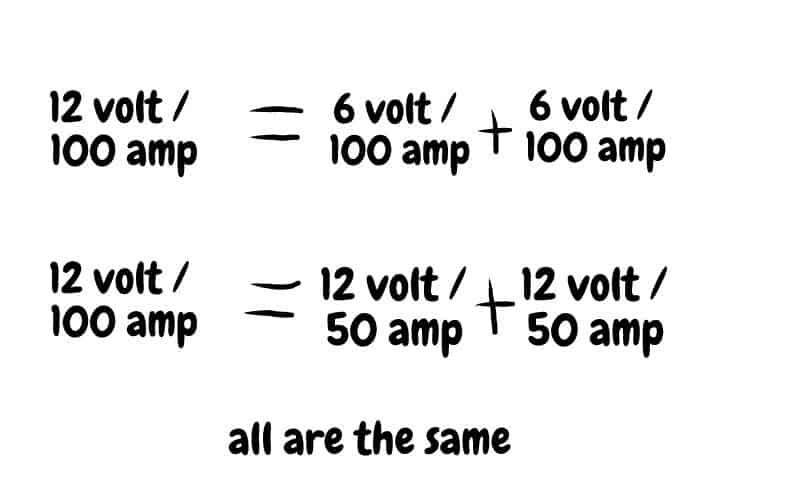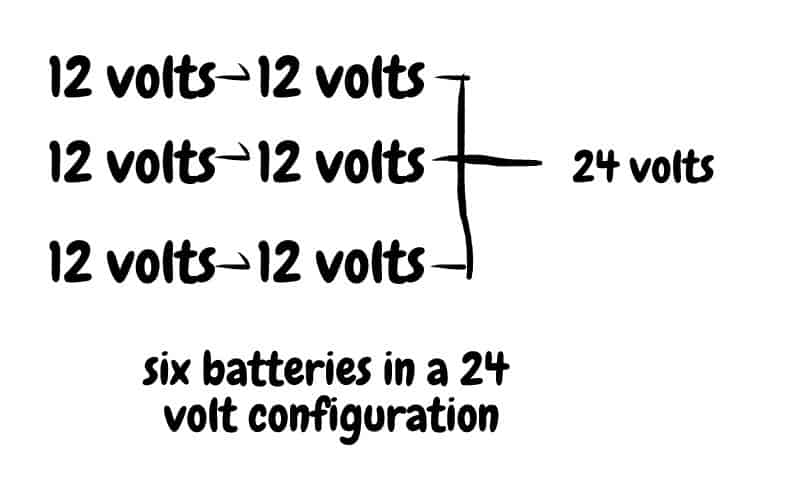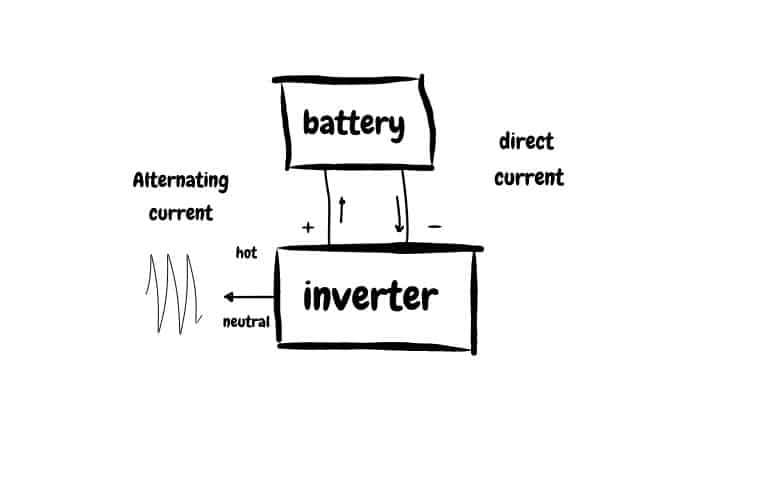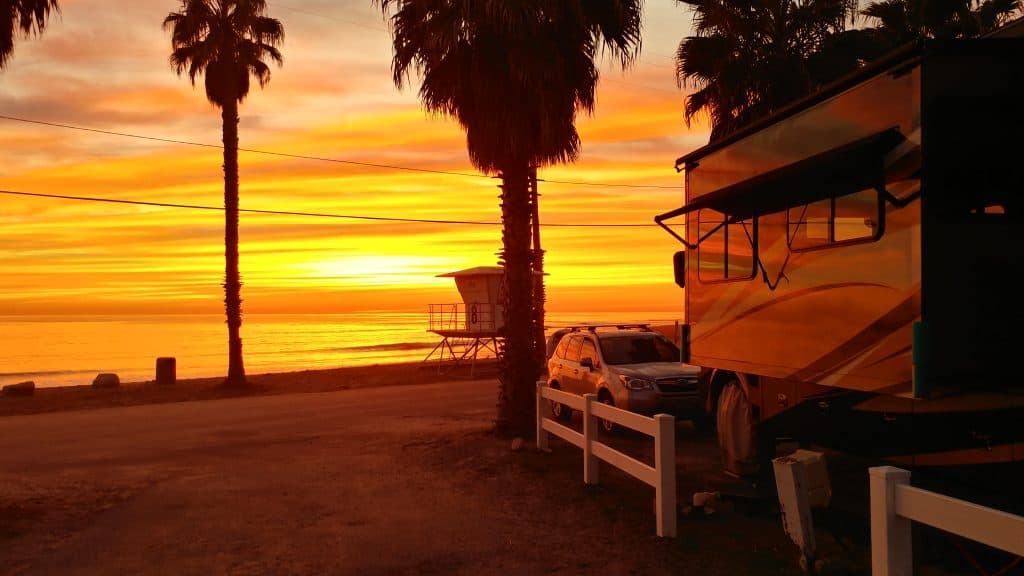RV Solar Series: 12 volts or 24 volts is a question the doesn’t get asked very often. The fact is that there are advantages to both configurations. Before we consider the advantages of each, we need some understanding of how multiple batteries work with each other.
Volts and Amps math

Battery banks can be assembled in two ways. Two batteries, both 12-volt assembled in series are additive in voltage, meaning that two batteries will be 24-volt. Series means one after another. The same two batteries assembled in parallel will remain at 12 volts. One of the considerations is that if you want to convert to a 24-volt battery bank using 12-volt batteries, you can only do that by buying pairs of batteries. You can’t add just one battery, even if you only have room for one battery, you can’t add just one.

Two or more 12-volt batteries in series in the above example create the 24-volt bank in the above example. Three batteries would make 36 volts and four would create 48 volts. Plus you can have batteries in both a series configuration and parallel configuration at the same time increasing both the voltage and the amperage of storage. The two battery configuration is illustrated as an example.

Inverter/chargers come in both 12-volts and 24-volts at about the same price for the same size. This decision can’t easily be reversed. Once you go down the path to a 24-volt system, you would have to replace the inverter/charger to start over.
Inverter Chargers
Inverter/chargers also come in 36-volt and 48-volt configurations. It is much more common to find 12-volt and occasionally 24-volt inverter/chargers.
If you go with a 24-volt battery bank you need to step down the voltage to 12-volts for typical 12-volt RV items such as light bulbs. This device is called a buck converter and carries a price tag of up to $60 for a quality one.

The function of the inverter will be to convert the 12-volt or 24-volt DC current and make 110 volt AC power. Once the change to AC power is made there is no difference. One advantage of a 24-volt battery is in required wire size on the DC side. To carry the same amperage a 24-volt DC requires wires half the gauge. This can be important especially if you have long wire DC wire runs – wire is expensive. For me, since my wire runs are short, this difference in expense is minimal. For me, the price of the buck converter outweighs the savings in wire costs.

An advantage to staying with a 12-volt battery bank, for me is that my engine alternator will charge my house battery, while I am driving. The charge rate coming from the engine, however, is small. If I made the conversion to a 24-volt system, I would have to disconnect this charge source. The fact is, I may disconnect this charge source anyways on my 12-volt battery bank to protect the bank from overcharge. Or I could drop $175 on a device that would do that automatically. This device is called a battery isolation manager.
Bigger Bang for the Buck
The same money could go to increasing my solar panels or help pay for an additional solar charge controller. To me, charging while driving is a small part of my overall charging scheme. I don’t like driving and try to only drive short distances. Typically we try to move less than one hundred miles and try to stay for a week. We make exceptions to this rule frequently. So for me I have to ask is charging my battery while driving work the expense and I have to answer; I don’t think so.
Save Serious Money
One place I can save serious money by changing to 24 volts is in the solar charge controller. My charge controller will service 660 watts of solar, at 12 volts but if I change the battery bank to 24 volts, then my same controller would service 1340 watts of solar. My charge controller price would be $325 each.
The price of the buck converter and the battery isolation manager both add up to $235 and goes a long way towards adding an additional solar charge controller. Of course, this is a false logic because the need for a buck converter is associated with a 24-volt system and the need for a battery isolation manager is associated with the conversion to lithium batteries and not associated with a 24-volt system.

